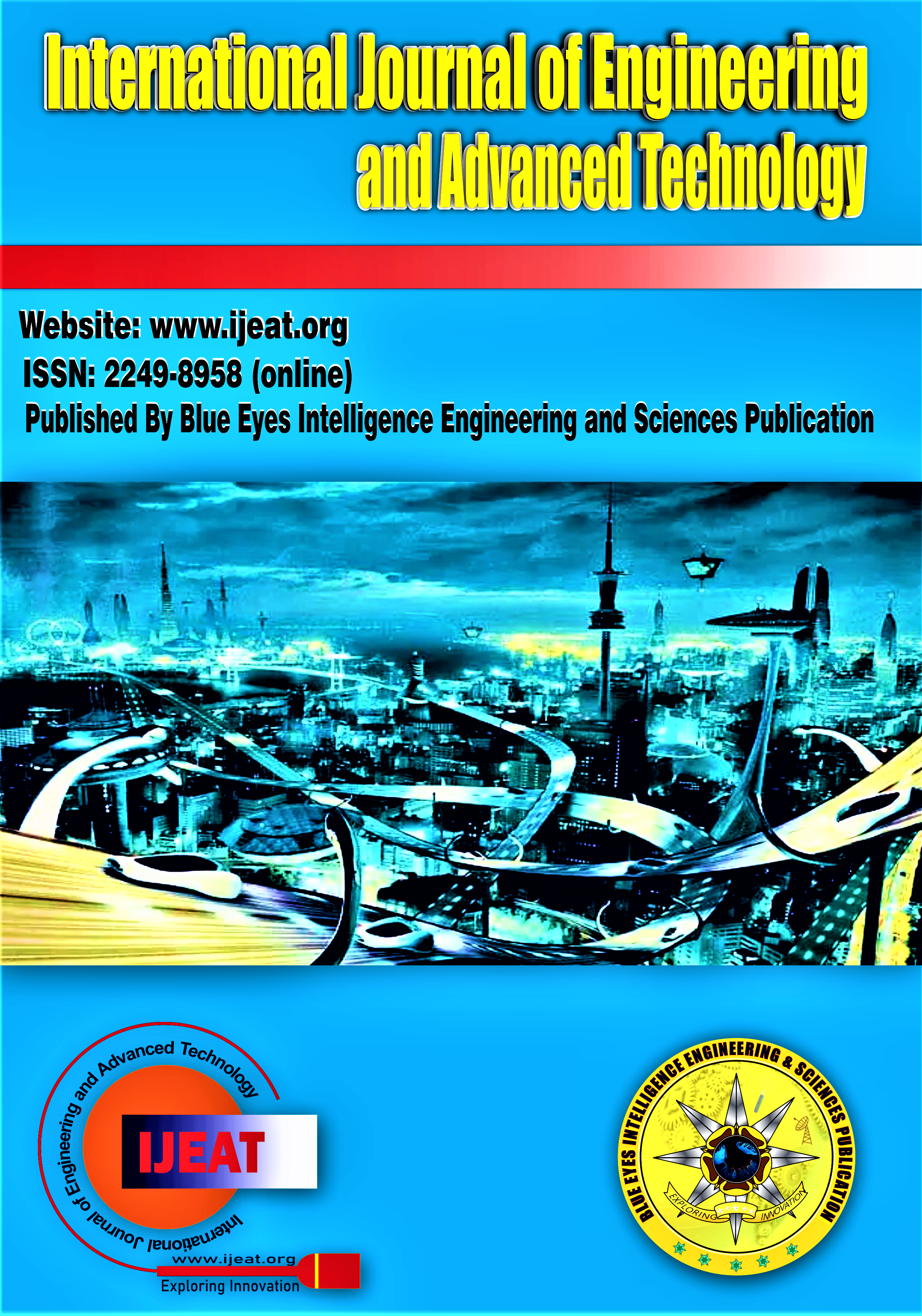Video Enhancement to Reduce Reflection and Darkness Caused by the Sunglasses using Fusion Algorithm
Main Article Content
Abstract
The enhancement of video of a person wearing sunglasses to reduce the reflection and darkness is a very challenging task in computer vision applications such as video surveillance. The existence of reflections and darkness caused by sunglasses results in intrusive images. The absence of a clear eye diminishes the visible quality of the complete face image. The eyes under sunglasses are not identified clearly if the reflection and darkness exist in the sunglasses. This paper demonstrates the reduction of adverse artifacts such as reflection and darkness in the eye region caused by sunglasses. The system is carried out with the fusion algorithm which consists of three modules: eyeglass tracking on face images, reduction of reflection, and reduction of darkness through the image enhancement method. The image enhancement method includes a color balance algorithm and a histogram stretching algorithm. Firstly, an automatic glasses presence detection model, based on a Robust Local Binary Pattern identifies the imaging process of the ocular region covered by the sunglasses. Secondly, a non-convex optimization scheme, guided by landmarks on the glasses, effectively reduces reflections through several iterations. The image enhancement method incorporating Color Balance, and Histogram Stretching is used to identify eye regions within sunglasses. The resulting regenerated eye regions within sunglasses exhibit increased brightness, subtle darkness, and minimized reflection. The objective evaluation metrics such as peak signal-to-noise ratio, structural similarity index measure, and logarithmic mean square error are used to measure the strength of the proposed system. Qualitative evaluations are conducted to demonstrate the good quality of eyeglass face images with reduced reflection and darkness.
Downloads
Article Details
Section

This work is licensed under a Creative Commons Attribution-NonCommercial-NoDerivatives 4.0 International License.
How to Cite
References
Mao. Ye, Cha Zhang, and Ruigang Yang, “Video Enhancement of People Wearing Polarized Glasses: Darkening Reversal and Reflection Reduction”, IEEE Conference on Computer Vision and Pattern Recognition, 2013.
C. M. Bishop, Pattern Recognition and Machine Learning, Springer-Verlag New York, Inc., Secaucus, NJ, USA, 2006.
M.Turk, and A. Pentland, “Eigenface for Recognition”, Journal of Cognitive Neurosciences, pp. 71–86, 1991. https://doi.org/10.1162/jocn.1991.3.1.71
H.Rowley, S.Baluja, and T.Kanade, “Neural Network-Based Face Detection”, IEEE Transactions on PAMI, 20(1), 1998. https://doi.org/10.1109/34.655647
K.K. Sung, and T.Poggio, “Example-based Learning for View-based Human Face Detection”, IEEE Transactions on PAMI, 20(1), pp. 39–51, 1998. https://doi.org/10.1109/34.655648
E.Osuna, R. Freund, and F.Girosi, “Training Support Vector Machines: An Application to Face Detection”, Proc. of CVPR, pp. 130–136, 1997.
C. Wu, C. Liu, H.Y. Shum, Y.Q Xu, and Z. Zhang, “Automatic eyeglasses removal from face images”, PAMI, 26(3), pp. 322–336, 2004. https://doi.org/10.1109/TPAMI.2004.1262319
Y. K.Wang, J.H. Janh, L.W. Tsai, and K.C. Fan, “Improvement of Face Recognition by Eyeglasses Removal”, Sixth International Conference on Intelligent Information Hiding and Multimedia Signal Processing, 2010. https://doi.org/10.1109/IIHMSP.2010.64
J.S.Park, Y.H.oh, S.C.Ahn, and S.W.Lee, “Glasses removal from Facial Image Using Recursive Error Compensation”, IEEE Transaction on Pattern Machine Intelligence, Vol. 27, No. 5, 2005. https://doi.org/10.1109/TPAMI.2005.103
A.F.Villan, R.Garcia, R.Usamentiaga, and R.Casado, “Glasses Detection on Real Images Based on Robust Alignment”, Machine Vision and Applications 26 (4), pp. 1–13, 2015. https://doi.org/10.1007/s00138-015-0674-1
M.Z.Lazarus, and S.Gupta, “A Low-Rank model based Improved Eye Detection under Spectacles”, IEEE 7th Annual Ubiquitous Computing, Electronics & Mobile Communication Conference, 2016. https://doi.org/10.1109/UEMCON.2016.7777820
Tushar Sandhan, and Jin Young Choi, “Anti-Glare: Tightly Constrained Optimization for Eyeglass Reflection Removal”, IEEE Conference on Computer Vision and Pattern Recognition, 2017. https://doi.org/10.1109/CVPR.2017.182
Weilin Luo, Shunquiang, and Jiwen Zheng, “Underwater Image Restoration and Enhancement Based on a Fusion Algorithm with Color Balance, Contrast Optimization, and Histogram Stretching”, IEEE Access, 9, pp. 31792-31804, 2021. https://doi.org/10.1109/ACCESS.2021.3060947
Yu, Haifeng & Li, Xinbin & Lou, Qian & Lei, Chengbo & Liu, Zhixin, “Underwater image enhancement based on DCP and depth transmission map”,
Multimedia Tools and Applications, 79, 2020, doi:10.1007/s11042-020-08701-3. https://doi.org/10.1007/s11042-020-08701-3
R.Liu, X.Fan, M.Zhu, M.Hou, and Z.Luo, “Real-world underwater enhancement: Challenges, benchmarks, and solutions under natural light”, IEEE Transacion. Circuits System, Video Technology, Vol. 30, No. 12, pp. 4861–4875, doi: 10.1109/TCSVT.2019.2963772, 2020.
O.G.Powar, “A review: Underwater image enhancement using dark channel prior with gamma correction”, International Journal for Research in Applied. Science and Engineering Technology, Vol. 5, No. 3, pp. 421–426, 2017. https://doi.org/10.22214/ijraset.2017.3077
H.M.Abrams, “Lamination of composite eyeglass lenses”, United States Patent 5433810,1995.
H.K Raut, V.A Ganesh, A.S Nair, and S.Ramakrishna, “Anti-reflective coatings: A critical, in-depth review”, Energy and Environmental Science, Issue 10, 2011. https://doi.org/10.1039/c1ee01297e
A.Hore, and D.Ziou, “Image quality metrics: PSNR vs. SSIM”, in Proc. 20th International Conference on Pattern Recognition, Istanbul, Turkey, pp. 2366_2369, 2010. https://doi.org/10.1109/ICPR.2010.579
Z.Wang, E.P. Simoncelli, and A.C.Bovik, “Multiscale structural similarity for image quality assessment”, in Proc. 37th Asilomar Conference on Signals, Systems Computers, Vol 2, pp. 1398_1402, 2003.
Grosse. R, Johnson. M.K, Adelson E.H, and Freeman. W.T, “Ground truth dataset and baseline evaluations for intrinsic image algorithms”, In Proceedings of IEEE 12th International Conference on Computer Vision, Kyoto, Japan, pp. 2335–2342, 2009. https://doi.org/10.1109/ICCV.2009.5459428
Kumari, J., Patidar, K., Saxena, Mr. G., & Kushwaha, Mr. R. (2021). A Hybrid Enhanced Real-Time Face Recognition Model using Machine Learning Method with Dimension Reduction. In Indian Journal of Artificial Intelligence and Neural Networking (Vol. 1, Issue 3, pp. 12–16). https://doi.org/10.54105/ijainn.b1027.061321
Anjaneyulu, P., Prasad, S. V. S., Syambabu, V., & Kumar, A. V. (2019). Deep Neural Network for Better Face Processing. In International Journal of Recent Technology and Engineering (IJRTE) (Vol. 8, Issue 4, pp. 2236–2239). https://doi.org/10.35940/ijrte.c6238.118419
Kumar S, P., & Balachander, Ms. B. (2019). Fast and Cost Efficient Face Detection System with CNN Using Raspberry PI. In International Journal of Engineering and Advanced Technology (Vol. 8, Issue 6, pp. 3037–3039). https://doi.org/10.35940/ijeat.f9034.088619
Prabhu, V., Thomas, D. R., & Kumar, V. S. (2019). Smart Glass for Visual Impaired People. In International Journal of Innovative Technology and Exploring Engineering (Vol. 8, Issue 12, pp. 3411–3415). https://doi.org/10.35940/ijitee.l2581.1081219
N, G., & K. R, Dr. R. (2022). Novel NOC Architecture for Designing and Implementing a Low Power Router using FPGA. In Indian Journal of Data Communication and Networking (Vol. 2, Issue 6, pp. 8–13). https://doi.org/10.54105/ijdcn.f5026.102622





